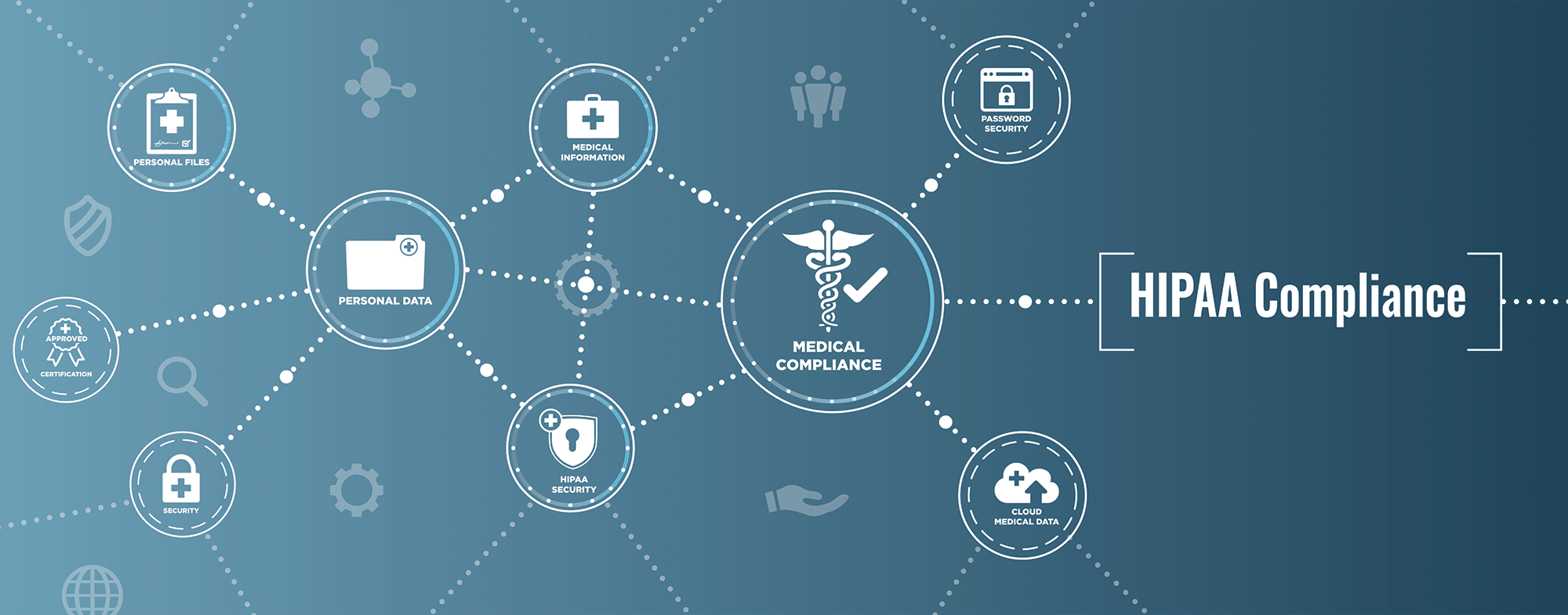The digital age has unlocked a myriad of possibilities in the healthcare sector, enhancing service delivery and transforming patient care. However, with this digital transformation comes a wave of cybersecurity threats that pose significant risks to healthcare organizations. From protecting patient records to securing systems against attacks, cybersecurity in healthcare is an issue of paramount importance that requires ongoing attention and robust strategies.
An Introduction to Cybersecurity in the Healthcare Industry
In the 21st century, healthcare has rapidly evolved, adopting digital technologies at an unprecedented pace. Electronic Health Records (EHRs), telemedicine, wearable medical devices, and sophisticated hospital management systems have revolutionized the industry. Yet, the integration of technology also exposes healthcare organizations to cybersecurity threats, making them attractive targets for cybercriminals.
Cybersecurity in healthcare is no longer a choice, but a necessity. Organizations must prioritize the protection of patient data and their internal systems to ensure the continuity and quality of their services. This article aims to equip readers with a comprehensive understanding of cybersecurity within the healthcare sector, from potential threats and cybersecurity services to best practices and measures in maintaining a secure environment.
Potential Cybersecurity Threats
The realm of healthcare has experienced a significant digital transformation in recent years. The evolution of Electronic Health Records (EHRs), telemedicine, AI-assisted diagnostic tools, and other technological advancements have led to significant improvements in the way healthcare is delivered. However, this increased reliance on technology has inadvertently exposed the sector to a wide range of potential cybersecurity threats.
These threats can cause significant disruption to healthcare services, and in a sector where the stakes are so high, the implications can be life-threatening. A breach in cybersecurity could lead to the leak of confidential patient data, disruption in medical services, financial losses, and can severely damage the reputation of the institution involved. In this section, we explore some of the most common cybersecurity threats that healthcare organizations face today.
Malware and Ransomware
Malware, which stands for malicious software, includes various types of harmful programs like viruses, worms, trojans, and ransomware. These threats are designed to infiltrate, damage, or disrupt systems, often laying dormant until activated by the attacker.
Ransomware, a specific type of malware, has become a prevalent threat in recent years. Attackers use ransomware to encrypt an organization’s data, making it inaccessible. The attacker then demands a ransom to decrypt the data. In a healthcare setting, where quick access to patient data can be crucial, a ransomware attack can have severe implications.
Phishing Attacks
Phishing attacks are a form of social engineering where attackers pose as trustworthy entities to deceive individuals into revealing sensitive information. These attacks often take the form of seemingly harmless emails or texts but have hidden malicious intent.
In a healthcare context, attackers may impersonate a known contact or institution to trick employees into revealing login credentials or other sensitive information. Once the attackers have this information, they can access secured healthcare systems, potentially leading to data breaches.
Insider Threats
Insider threats originate from within the organization. They can be either intentional, involving malicious intent from employees or associates, or unintentional, resulting from negligence or unawareness.
In the context of healthcare, an unintentional insider threat could involve an employee unknowingly clicking on a malicious email link or mismanaging patient data. Intentional threats, though less common, can involve employees who misuse their access rights to leak or manipulate sensitive data.
Data Breaches
Data breaches involve unauthorized access to sensitive data. Healthcare organizations store large amounts of personal and medical data, making them an attractive target for cybercriminals. Data breaches can occur due to various reasons, such as weak security measures, phishing attacks, or even insider threats.
A data breach can lead to significant financial losses due to potential fines, litigation costs, and reputational damage. Moreover, it can put patients’ privacy and health at risk, making it a severe concern for healthcare providers.
Supply Chain Attacks
Supply chain attacks involve threat actors targeting less secure elements in an organization’s supply chain to compromise the main organization’s security. In the healthcare context, an attacker could exploit vulnerabilities in a third-party vendor’s system to gain access to the healthcare organization’s network.
A well-known example of a supply chain attack is the SolarWinds hack, where attackers infiltrated the network management company’s software, later affecting many of its clients. In healthcare, such an attack could disrupt critical services and expose sensitive data.
Advanced Persistent Threats (APTs)
Advanced Persistent Threats (APTs) are a type of cyberattack where the attacker gains unauthorized access to a network and remains undetected for an extended period. These long-term attacks aim to steal data or monitor the organization’s activities rather than causing immediate damage.
Healthcare organizations, due to the wealth of sensitive data they hold, can be attractive targets for APTs. These attacks are complex and difficult to detect, requiring robust and proactive cybersecurity measures to prevent.
Understanding these potential threats is critical for healthcare organizations as they develop their cybersecurity strategies. Each threat requires a tailored response, and mitigating these risks is an ongoing process requiring constant vigilance and regular updating of cybersecurity measures.
Healthcare Cybersecurity Services
In today’s digital healthcare landscape, cybersecurity services are vital to ensure the secure and uninterrupted operation of healthcare systems and services. Healthcare organizations deal with a multitude of sensitive information, from patient records to proprietary research data, necessitating robust cybersecurity measures. As the complexity and sophistication of cyber threats increase, the range of cybersecurity services needed to counter these threats has also expanded.
Risk Assessment
One of the first steps in creating a robust cybersecurity strategy is performing a comprehensive risk assessment. This involves identifying potential vulnerabilities in the system, evaluating the risk associated with each vulnerability, and prioritizing remediation efforts. This continuous process enables healthcare organizations to keep their defenses updated in the face of evolving threats.
Network Security
Securing a healthcare organization’s network is paramount to keeping its data and systems safe. Network security services can include firewall configuration, intrusion detection systems, secure configuration of network devices, and consistent monitoring of network traffic for suspicious activity.
Data Protection and Encryption
As healthcare organizations handle a significant amount of sensitive data, including patient health information (PHI), they need robust data protection measures in place. This includes encryption of data both at rest and in transit, secure data storage solutions, and effective data backup and recovery plans.
Endpoint Security
With the proliferation of devices accessing healthcare networks, endpoint security has become crucial. Endpoint security involves protecting each endpoint on the network, such as computers, smartphones, and medical devices, from potential cyber threats. This can be achieved through antivirus software, secure device configuration, and regular device updates.
Security Awareness Training
People are often the weakest link in a cybersecurity strategy. Thus, comprehensive security awareness training for all staff is vital. This training can help staff recognize potential cyber threats, such as phishing attempts, and understand the importance of following best practices for data handling and device usage.
Incident Response Planning
Despite the best defenses, breaches can occur. When they do, it’s essential to have an incident response plan in place to quickly identify, contain, and mitigate the impact of the breach. Such plans often involve identifying the scope of the breach, isolating affected systems, eradicating the threat, recovering data, and conducting a post-incident review to improve future responses.
Compliance Services
Healthcare organizations must comply with various laws and regulations regarding data security, such as the Health Insurance Portability and Accountability Act (HIPAA) in the U.S. Compliance services ensure that the organization’s cybersecurity measures align with these legal requirements, helping to avoid potential fines and reputational damage.
The Benefits of Investing in Healthcare Cybersecurity
Investing in cybersecurity is no longer a luxury or an afterthought for healthcare organizations. It is a critical necessity. The sensitive nature of the data handled by these organizations, coupled with the evolving threat landscape, makes cybersecurity investment imperative. Here, we discuss some of the most significant benefits of investing in healthcare cybersecurity.
Protection of Patient Data
At the heart of any healthcare institution lies a trove of sensitive patient data. This information is not just a record of medical history but also a testament to the faith that patients place in healthcare providers. In the wrong hands, this data can lead to identity theft, fraud, and other malicious activities.
A robust cybersecurity infrastructure helps protect this data from various threats, ensuring the privacy of patients’ information. This includes implementing secure data storage solutions, utilizing strong encryption for data in transit and at rest, and applying strict access controls to prevent unauthorized access.
Maintaining System Availability
Healthcare organizations rely heavily on their IT systems to provide timely and effective patient care. These systems include electronic health records, imaging systems, appointment scheduling, billing, and more. Any disruption in these services, whether from a DDoS attack or a ransomware infiltration, can lead to delays in treatment, potentially endangering patient health.
Investing in cybersecurity allows healthcare providers to maintain the availability and integrity of these vital systems. This involves strategies such as regular system backups, network monitoring, and incident response planning to quickly address any threats that could impact system availability.
Financial Savings
The cost of a data breach can be staggering. According to the 2020 Cost of a Data Breach Report by IBM, the average cost of a data breach in the healthcare sector was $7.13 million, the highest of all industries. This cost includes potential regulatory fines, litigation costs, remediation expenses, and the cost of reputation damage.
Investing in cybersecurity can help healthcare organizations avoid these financial pitfalls. By implementing proactive security measures, they can detect and neutralize threats before they escalate, reducing the likelihood and impact of data breaches.
Enhancing Patient Care
Cybersecurity isn’t just about protecting data—it’s also about ensuring that healthcare providers can access and use that data when they need it. With secure and reliable systems, healthcare providers can access patient records, lab results, and other critical information quickly and accurately.
Investments in cybersecurity can also lead to improvements in telemedicine and other digital health services. By ensuring the privacy and security of these services, healthcare organizations can offer more flexible and convenient care options to their patients.
Boosting Patient Trust
Patients entrust healthcare providers with their most sensitive information. A breach of this trust, such as a data leak, can severely damage the provider-patient relationship.
By demonstrating a commitment to robust cybersecurity, healthcare organizations can reassure patients that their data is in safe hands. This not only helps retain existing patients but also attracts new ones who value their privacy.
Compliance with Regulations
Healthcare data is heavily regulated worldwide. From the Health Insurance Portability and Accountability Act (HIPAA) in the U.S. to the General Data Protection Regulation (GDPR) in the EU, healthcare providers are required to follow stringent data protection rules.
Investing in cybersecurity helps healthcare organizations meet these regulatory standards, avoiding costly fines and legal complications. Moreover, it demonstrates their commitment to best practices in data security, enhancing their reputation in the industry.
Protecting Intellectual Property
Healthcare organizations often house valuable intellectual property (IP), including research data, treatment methods, and proprietary software. This IP can be a prime target for cybercriminals looking to sell or exploit the information.
Cybersecurity measures help safeguard this intellectual property by detecting and mitigating potential threats. This not only prevents financial losses but also protects the time and effort invested in developing these innovations.
Tips for Maintaining a Secure Healthcare Environment
Maintaining a secure healthcare environment is an ongoing task that requires diligence, awareness, and a comprehensive cybersecurity strategy. With the growing complexity of cyber threats, healthcare organizations need to be proactive in their security efforts. Here are some crucial tips that can help create and maintain a secure environment.
Regular Risk Assessments
Conducting regular risk assessments is essential for understanding the cybersecurity landscape that healthcare organizations navigate. These assessments map out the entirety of the IT infrastructure, identifying vulnerabilities in hardware, software, and even personnel practices.
With this information, cybersecurity teams can prioritize their efforts, focusing on the most critical or exposed areas. Regular risk assessments also help organizations stay ahead of emerging threats and adjust their security protocols accordingly.
Employee Training and Awareness
Cybersecurity is not solely a technological issue; it is also a human one. Healthcare staff, from physicians to administrative personnel, interact with IT systems daily, and their actions can potentially lead to security incidents. Therefore, regular training is essential.
This includes learning about various forms of cyber threats (like phishing and ransomware), safe online practices, and organizational policies related to data handling. A culture of awareness and vigilance can significantly reduce the risk of breaches caused by human error.
Implement Strong Access Controls
Access controls are a critical part of data security, ensuring that only authorized individuals can access sensitive information. This involves creating comprehensive policies that include implementing strong password rules, employing multi-factor authentication, and managing user privileges based on their role and necessity. Furthermore, the principle of least privilege (PoLP) should be applied, wherein users are given the minimum levels of access necessary to perform their functions.
Maintain System and Software Updates
System and software updates often include patches for known security vulnerabilities. Failing to install these updates promptly can leave systems exposed to threats. Therefore, healthcare organizations should establish processes to track, evaluate, and apply these updates as soon as they become available. This should include not only central IT systems but also individual devices used by staff.
Invest in Network Security
Securing the organization’s network is key to protecting data and systems. This involves implementing firewalls to block unauthorized access, using intrusion detection and prevention systems to spot and halt potential attacks, and employing network segmentation to limit the spread of any potential intrusion. Regular network monitoring and penetration testing can also help identify vulnerabilities and ensure the effectiveness of these measures.
Have a Disaster Recovery Plan
Despite the best efforts, cyber breaches can occur. When they do, the response can determine the impact of the breach. A disaster recovery plan details the steps to take following a breach, including identifying and isolating affected systems, investigating the cause, and notifying affected parties. Regular testing and updating of the disaster recovery plan are crucial to ensuring its effectiveness when needed.
Regularly Backup Data
Data backups are a safety net, allowing for the restoration of data in the event of a breach, system failure, or data corruption. These backups should be performed regularly and stored securely, either offsite or on encrypted cloud systems. Regular audits should also be performed to verify the integrity of the backups and the effectiveness of the backup process.
Encrypt Sensitive Data
Encryption protects sensitive data by making it unreadable to anyone without the decryption key. Healthcare organizations should encrypt sensitive data both at rest (stored on a disk) and in transit (during transmission over a network). This includes not only patient data but also communication between staff and other confidential information.
Monitor and Audit System Activities
Constant monitoring can help identify unusual activities that could signal a security breach. This includes repeated login attempts, significant changes in network traffic, or accessing large amounts of data. Regular audits should also be performed to verify compliance with access controls and other security policies.
Comply with Legal and Regulatory Standards
Regulations like HIPAA in the U.S. and GDPR in the E.U. provide guidelines for protecting personal data. Compliance with these regulations is a legal requirement, but it also contributes to a robust cybersecurity posture. Healthcare organizations should regularly assess their compliance with these standards and make any necessary adjustments.
Aligning Cybersecurity and Data Privacy
Cybersecurity and data privacy, while interrelated, are two distinct domains. Cybersecurity focuses on protecting data from external threats, while data privacy is concerned with how data is collected, stored, shared, and used, respecting individuals’ rights. In a healthcare context, these two domains often converge, with data privacy regulations like HIPAA and GDPR having explicit security requirements.
The Convergence of Cybersecurity and Data Privacy
The convergence of cybersecurity and data privacy in healthcare can be attributed to the sensitivity of the data in question. Patient health information (PHI) is amongst the most sensitive data types. Breaches of such data can have severe consequences, not only in terms of regulatory penalties but also the potential harm to patients. Therefore, healthcare organizations must manage PHI with a high level of care, considering both its security and the privacy of the patients it pertains to.
The Role of Regulations
Regulations like HIPAA and GDPR play a significant role in aligning cybersecurity and data privacy. These regulations have explicit security requirements to ensure the privacy of personal data. For example, HIPAA requires healthcare organizations to have administrative, physical, and technical safeguards in place to secure PHI. These requirements serve to create a baseline level of cybersecurity that supports data privacy.
The Importance of a Privacy-Focused Culture
Creating a privacy-focused culture within healthcare organizations is another critical aspect of aligning cybersecurity and data privacy. This involves cultivating an understanding amongst staff that protecting patient data is not just a technical or regulatory requirement, but a critical part of patient care. Regular training and clear privacy policies can support this culture, ensuring that all staff understand their role in protecting patient data.
Balancing Access and Privacy
Balancing the need for access to patient data with privacy requirements is a constant challenge for healthcare organizations. This requires careful management of access controls, ensuring that staff can access the data they need to provide care, but that unnecessary access to PHI is restricted. Audit logs can help manage this balance, providing visibility into who is accessing data and when.
Incorporating Privacy by Design
The principle of Privacy by Design involves considering privacy at every stage of the system development process, rather than it being an afterthought. This can include measures like data minimization (only collecting the necessary data), pseudonymization, and incorporating strong access controls from the outset. Privacy by Design can help align cybersecurity and data privacy practices, ensuring that systems are secure and respect patient privacy.
Disposing of Health Records Securely
The proper disposal of health records is an often overlooked but crucial aspect of cybersecurity. Failing to dispose of these records securely can lead to unauthorized access long after the patient’s treatment.
Physical Records
Physical records should be destroyed in a manner that makes data recovery impossible. This often involves shredding the documents in a cross-cut shredder or incinerating them. The remains should then be disposed of securely, following local regulations.
Electronic Records
Electronic records present a unique challenge as simply deleting the files or formatting the storage device is often insufficient. Data can often be recovered from these devices using specialized software. Therefore, secure disposal methods, such as cryptographic erasure or physical destruction of storage media, should be used.
Third-Party Disposal
In many cases, healthcare organizations may contract third-party companies to dispose of their records. These companies should be carefully vetted to ensure that they follow secure disposal practices and comply with relevant regulations. Contracts should also include provisions requiring the secure handling and disposal of records.
What To Do in Case of a Cyber Attack
In today’s digital age, cyber threats are increasingly complex and relentless. Despite best efforts to prevent them, healthcare organizations might face cyber-attacks. The repercussions of these attacks can be devastating, leading to data breaches, system downtime, and even compromised patient care. Therefore, understanding what to do in case of a cyber-attack is crucial.
Incident Response Plan
An incident response plan serves as a structured approach to handling cybersecurity incidents. It allows organizations to manage the situation effectively, reducing damage, recovery time, and costs. The plan should be comprehensive, covering key aspects such as:
- Detection and Reporting: This involves implementing systems that can detect anomalies or intrusions and having a clear protocol for staff to report suspected incidents.
- Initial Response: Upon discovering a potential cyber-attack, the incident response team should isolate affected systems to prevent the threat from spreading.
- Investigation: Experts should investigate the nature of the attack, the exploited vulnerabilities, and the extent of the damage. This information can aid in containing and mitigating the attack.
- Notification: If patient data is compromised, healthcare organizations are legally obligated to inform affected individuals and certain regulatory bodies.
- Recovery and Restoration: This involves eliminating the threat, repairing systems, and restoring normal operations.
- Post-Incident Review: After handling the incident, the response team should review the event and the organization’s response. They should identify strengths and weaknesses in the response strategy to inform improvements.
Post-Incident Analysis
A cyber attack is a significant event that needs to be thoroughly analyzed once controlled. The main aim of the post-incident analysis is to extract learning points from the breach. This includes analyzing:
- Attack Vectors: Understanding how the attacker got in, and what vulnerabilities they exploited, can help strengthen the organization’s defenses.
- Impact Analysis: Evaluate the extent of the damage – how much data was lost or compromised, and what was the cost implication.
- Breach Response Evaluation: Assess how well the organization responded to the breach. Were there any bottlenecks or inefficiencies?
- Preventive Measures: Use the lessons learned to enhance cybersecurity measures and prevent a similar attack in the future.
Conclusion
Cybersecurity in healthcare is not a destination but a journey. It’s an ever-evolving discipline, demanding constant vigilance and adaptation. As cyber threats grow in sophistication, healthcare organizations must concurrently advance their defenses. This involves investing in robust security technologies, conducting regular risk assessments, fostering a security-conscious culture, and continually training staff. The stakes are high – protecting not just the organization’s data, but the privacy and trust of the patients they serve.







